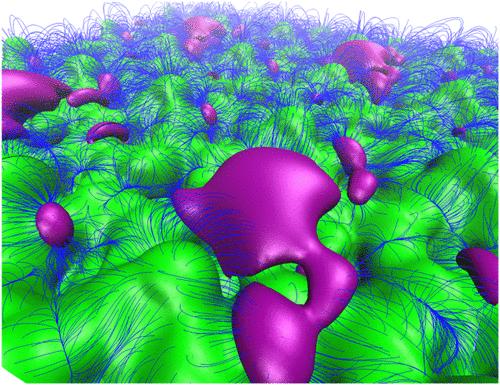Rare Earth Selectivity and Electric Potentials at Mica Interfaces
IF 8.2
2区 材料科学
Q1 MATERIALS SCIENCE, MULTIDISCIPLINARY
引用次数: 0
Abstract
Controlling materials’ composition and structure to selectively adsorb rare earth elements (REE) is critical for better separations. Understanding how local electric potentials affect REE adsorption and how they can be modified via chemical substitution is of fundamental importance. We present calculated mean inner potentials for muscovite and phlogopite micas in excellent agreement with measured values of +10.6 V. Natural substituents for aluminum significantly influence the electric potentials at the basal surface, altering the REE adsorption energies (Ead). Nd3+ adsorption is generally favored over that of Yb3+ on both micas. Substituents with lower charge than aluminum increase the Lewis basicity of adjacent oxygen atom lone electron pairs, enhancing Ead by 20 to 30 kcal/mol. These substitutions modify the electric potential’s magnitude and spatial extent, highlighting the role of high-resolution electron holography/tomography and the importance of understanding atomic-scale variations in electric potentials for improving REE cation adsorption and selectivity on micas. In summary, the adsorption energies of REE cations are correlated with the substituent charge and local electrostatic potential variations because these factors dictate the electrostatic interactions between the cations and the interface.

稀土在云母界面上的选择性和电势
控制材料的成分和结构以选择性地吸附稀土元素(REE)对于更好地分离稀土元素至关重要。了解局部电势如何影响稀土元素的吸附,以及如何通过化学置换来改变局部电势,具有极其重要的意义。铝的天然取代基极大地影响了基底表面的电势,从而改变了 REE 的吸附能 (Ead)。在这两种云母上,Nd3+ 的吸附通常比 Yb3+ 的吸附有利。电荷比铝低的取代基增加了相邻氧原子孤电子对的路易斯碱性,使 Ead 提高了 20 至 30 kcal/mol。这些取代物改变了电势的大小和空间范围,突出了高分辨率电子全息图/层析成像的作用,以及了解电势原子尺度变化对改善微晶上 REE 阳离子吸附和选择性的重要性。总之,REE 阳离子的吸附能与取代基电荷和局部静电位变化相关,因为这些因素决定了阳离子与界面之间的静电相互作用。
本文章由计算机程序翻译,如有差异,请以英文原文为准。
求助全文
约1分钟内获得全文
求助全文
来源期刊

ACS Applied Materials & Interfaces
工程技术-材料科学:综合
CiteScore
16.00
自引率
6.30%
发文量
4978
审稿时长
1.8 months
期刊介绍:
ACS Applied Materials & Interfaces is a leading interdisciplinary journal that brings together chemists, engineers, physicists, and biologists to explore the development and utilization of newly-discovered materials and interfacial processes for specific applications. Our journal has experienced remarkable growth since its establishment in 2009, both in terms of the number of articles published and the impact of the research showcased. We are proud to foster a truly global community, with the majority of published articles originating from outside the United States, reflecting the rapid growth of applied research worldwide.
 求助内容:
求助内容: 应助结果提醒方式:
应助结果提醒方式:


